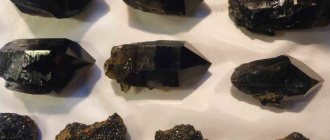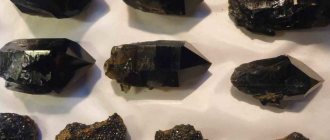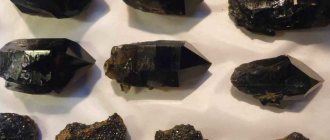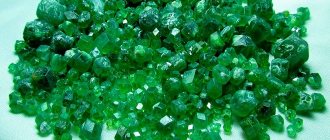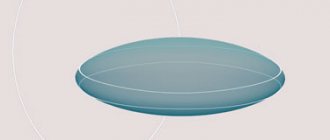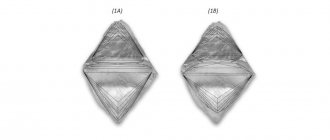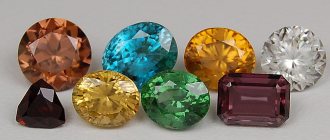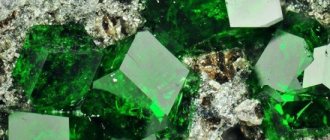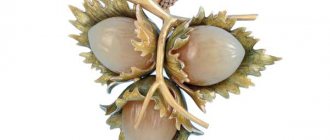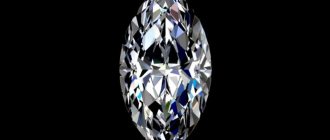Accessories are not just pretty. It seems that the minerals are barely audibly humming a melody, creating an emotional background. Maybe it's Rammstein - and today you're rebelling? Or the ring purrs an Adele song. Not that important. It's a shame if the stone falls out and the melody stops. Or she was initially quiet, because the stone was sent “to the crowd.” In a word: setting is important. And before you buy jewelry, read our tip on basic (and innovative) types of stone settings.
Setting - a method of fastening a stone
, installing it in the frame. This is a complex process. It cannot be automated. In factories, stones are often set by hand. Moreover: setters are considered the elite of the jewelry world. How the mineral will look depends on them. And will he play his “solo” with full dedication? In total, fastenings are divided into three types: prong, blind and corner.
Blind fastener
Deaf
. The stone is set directly into a special socket in a metal frame, which “hugs it tightly.” The ideal type of fastener for daily wear. This method has an interesting subtype called “Roma setting”. Its essence is that the metal covers the stone slightly from above. The mineral is “recessed” inside the ring. This guarantees the safety of the stone.
Minuses:
- Light falls on the stone only from above, so blind setting is more often used for opaque stones.
- This setting is the easiest way to hide doublets and triplets (glued layers of thin strips of glass and stone). Strictly speaking, this is not a fake, but the tag should indicate that a doublet was used in the decoration. Often they don’t do this, showing only the upper part of the insert, keeping silent about its “ins and outs”.
Setting "Three stones"
A large stone is in the center. The remaining two are located on the sides. The stones can be the same size or different. Rings with the “three stone” type of fastening are bought mainly by those getting married or on the occasion of engagement.
The fastening of stones in this case can be anything - pronged, blind or otherwise. The pros and cons of these types of fixations are listed above.
Positive sides:
several stones enhance the play of the central component, especially if it is a diamond
Negative sides:
Caring for a ring with the “Three Stones” fastening type is very difficult. There is no way to get by with ordinary improvised means. To remove stains, you will have to buy special products or contact a master jeweler.
The central stone in the ring will look advantageous only if it is larger and located a little higher above the rest of the inlaid elements.
CRAP STACK
Krapanovaya
. Claws or hooks wrap around the stone, putting the emphasis on it rather than the ring itself. Rays of light pass through the stone from all sides, creating an amazing shine and shine. This insert is easy to clean. Also, prong setting makes it possible to see the presence of defects in the stone. By the way, recently it has become fashionable for designers to fasten the stone with the tenon pointing up. And this practice is already being applied in the jewelry mass market. You'll see - don't be surprised. Enjoy!
Minuses:
- The reliability of the fastening is less than that of the blind method.
- The pebble can cling to clothes and hair.
- The edges of the paws can rub and wear out with daily wear.
Prong type setting
The most popular method of fixing a stone in a ring is a prong setting. Involves the presence of small pins made of the material from which the frame is made. The stone is pressed against these pins, which prevent it from falling out.
The number of pins varies from four to six. It is less common to find rings with eight elements. It is not difficult to guess that the more teeth, the better from a safety point of view. But a significant number of pins causes the diamond or any other stone to be less visible.
The positive aspects of the prong type setting are as follows:
most of the stone remains visible. This is especially good if the stone is a diamond. It shines better in the light, attracting the attention of others;
versatility. Using this method of fixation, the stone can be fixed to a ring of any size. A few pins will not degrade the appearance of the jewelry.
There is also one minus
the teeth can catch on clothing items as well as hair. To prevent this from happening, you should check the integrity of the pins frequently. If they are worn out, then visit a master jeweler. It will bend them, improving the hold of the stone in place.
Experts advise looking for rings with a prong type of fixation, where the stone is located within the boundaries of the base. Such products will last longer than those where the inlaid element protrudes significantly beyond the frame.
TIFFANY&CO CLAMP
This is a type of crapone. But if the “classic” setting has four teeth, then the Tiffany setting
- six.
They are barely noticeable, allowing light to penetrate into the very heart of the stone and burst out, creating a halo of radiance around the ring. Plus, thanks to its “high” setting, the stone seems to float above the ring. Such jewelry is called solitaires
(the mineral acts as a soloist and does not need extras).
By the way, it was Tiffany that at one time introduced the fashion for engagement rings with diamonds. There were no standards before 1866. But Charles Tiffany decided that such things should not be left to chance. The best option for a declaration of love: a symbol of purity and eternity - a diamond. He must attract attention to himself, wrest the cherished consent. In a word, discourage. This is how the Tiffany setting was born: the most simple design that focuses attention on the stone. And judging by the fact that the solitaire has become the standard for an engagement ring
, Tiffany's plan is working.
Cons : identical to the classic crown setting
PAVE SETTING
Pavé (pavement)
. Used to install a large number of small stones, creating the effect of a sparkling smooth surface. To do this, small niches are drilled into the metal for each mineral. Very popular in designer jewelry, but also common in our latitudes. One of the aesthetic subtypes of pavé is snow setting. The stones are fixed at a certain distance from each other and create the effect of a melting snowflake. Looks great.
Minuses:
- A complex technique that requires a painstaking approach and the skill of a jeweler-setter. Due to poor workmanship, stones may fall out of the jewelry.
- It is often almost impossible to change the ring size.
RAIL FASTENING
Channel (rail)
. The stones are fixed into a special channel (rail). It is soldered along the edges of the metal. The method is used for transparent stones through which light passes beautifully. At the same time, the inserts are protected from impacts and do not cling to clothing.
Minuses:
- Due to close contact, chips may occur on the stones.
- Requires regular cleaning by a jeweler.
- Difficult to change ring size.
Cluster type bartack
If it is necessary to place stones close to each other, then a cluster type setting is used. Thanks to it, all the elements visually merge into one, giving the ring a special luxury.
Cluster-type fixation involves solid fastening of the central stone, around which elements of similar or smaller dimensions are located.
Positive sides:
This type of fixation is highly reliable. In addition, it makes it possible to obtain a high play of light at low costs for purchasing a ring.
Negative sides:
Caring for jewelry involves a number of difficulties. Without special means and devices, it will not be possible to get rid of contaminants on the surface and in the recesses.
ADHESIVE FITTING
Adhesive
. Used for complex-shaped stones, round minerals, amber and pearls. To do this, a hole is made in the insert in advance, then the stone is placed on a special pin and secured with glue for reliability.
Minuses:
- Necessity of careful cleaning at the jeweler.
- The decoration is “afraid” of water. If you get caught in the rain, it’s not a problem, but you shouldn’t wash the dishes in full dress.
ROOT FITTING
Corner
. The stone is placed not in special niches, but directly in the metal between peculiar columns (corners). To do this, holes are made in advance. One of the most difficult types of setting. Most often used for small stones.
Minuses:
- High labor intensity and, as a result, the cost of decoration.
- It is almost impossible to change the size of the jewelry.
Corner cast
Corner casting is a type of setting of precious stones using small columns called corners. Sometimes the roots can take the form of small balls. Most often, the corners themselves are made from the same precious metal as the product or frame itself. The advantage of this technique is that thanks to this setting, the precious crystal is practically freed from the metal and receives maximum light, which provides it with shine, sparkle, and such jewelry is also easy to clean.
Most often, corner casting is used when creating jewelry in which many small stones are planned to be placed; thanks to this technique, the jewelry insert visually looks larger. However, if such fastening is done poorly, then the corners will scratch the skin, cling to clothing and cause a lot of inconvenience.
If we talk about the structure of the cast, it can be either open or built-in. The open one is very similar to the bezel caste; it turns out that the gemstone is secured both by the post and by the setting walls themselves. Also, sometimes the open version of the root cast is confused with the prong setting.
Technique for making an open corner setting : a small strip of precious metal is taken, usually 1.4 - 1.8 mm, and a support belt is made from it, or in other words, a smooth rim cast. This is the future landing nest for stones. Now, metal is sampled from the resulting rim in pre-planned places, leaving thin columns (corners) as a result. A similar operation is carried out with a special jewelry tool, a graver. And the final stage of this procedure is additional processing of the roots.
A technique for making a built-in corner cast , which is a special hole, or socket, into which precious stones will be inserted. There are several types of built-in root cast:
- Cast "Kare".
- Cast "Pave".
- Faden cast.
The Kare cast is a separate plate that has a square shape. A hole is made in the center of this shape, where you can see four corners. Most often, several types of rivets are combined in a piece of jewelry, because in this case the edges of the plate itself will be longer than the diameter of the insert.
The Pave cast is a set of holes that almost completely fill the space of the plate. In this case, the fastenings are made clearly along certain rows. This product looks very beautiful, it seems that the jewelry consists entirely of precious stones, and there is absolutely no metal. However, it is worth noting that in this case the stone is not supported by a corner, but by a thin layer of the metal itself.
The Pavé casting technique is as follows: the jeweler first drills holes, after which he places the crystals tightly. Now you need to make influxes of metal that will hold a group of stones at once. As a result, it appears that, in essence, many small inserts look like one large gemstone.
And the average option between one hole and many is faden caste . In any case, the choice of corner casting will depend on the number of gems used, which can be arranged either in a checkerboard pattern or in a vertical and horizontal direction with an offset. Such jewelry looks very stylish, elegant and beautiful, especially when it is not possible to buy jewelry with a large diamond.
posted by ffurik | | publish your technique
| Tweet |
<< previous techniquenext technique >>
INNOVATIVE FITTING
Designer
.
Every self-respecting jeweler develops his own type of setting. This is how Swiss designers use stone setting in stone
.
The contrast between minerals enhances their beauty. Plus, you can play with color using gems and mother-of-pearl. This type of setting
was popular back in Ancient Egypt. It was later forgotten and only recently revived in Europe. Stones in a jewelry glass case can hardly be called setting. But on the other hand: what should we call it? In any case, jewelry cases are now at the peak of popularity. They look unusual and allow the stones to play with the palette, not paying attention to conventions and boundaries.
Setting is one of the indicators of the value of a product. And now that you have become an expert, you can easily choose the appropriate option. The Zlato.ua catalog presents a wide selection of both engagement rings and simply chic products that will highlight your individuality.
